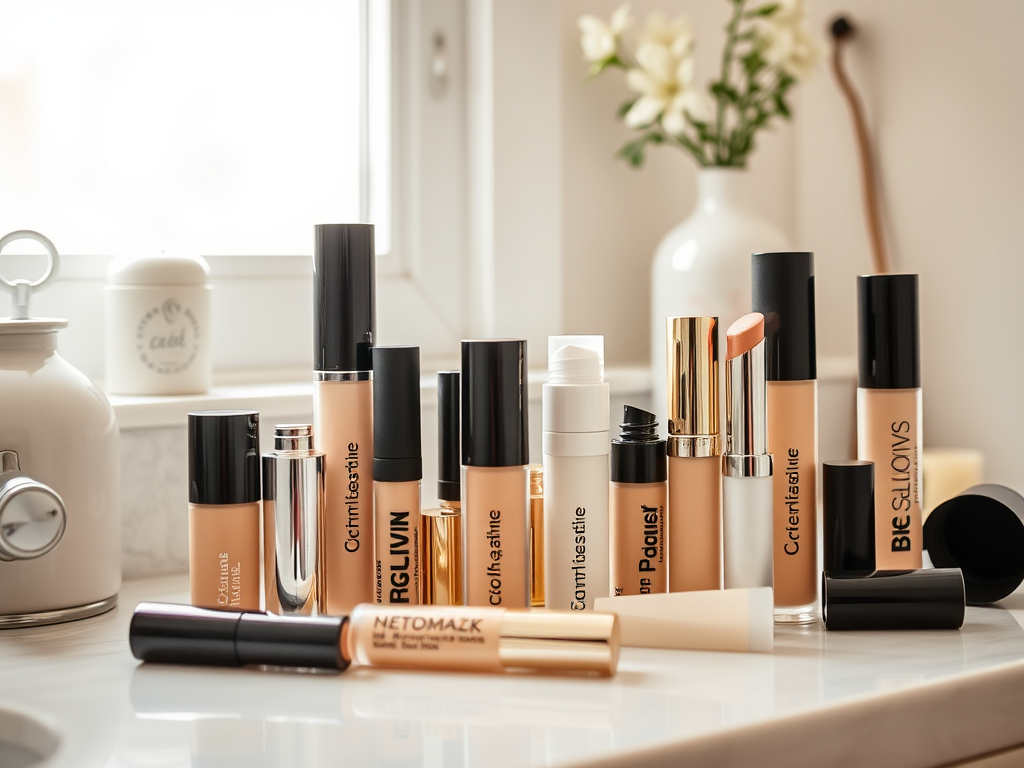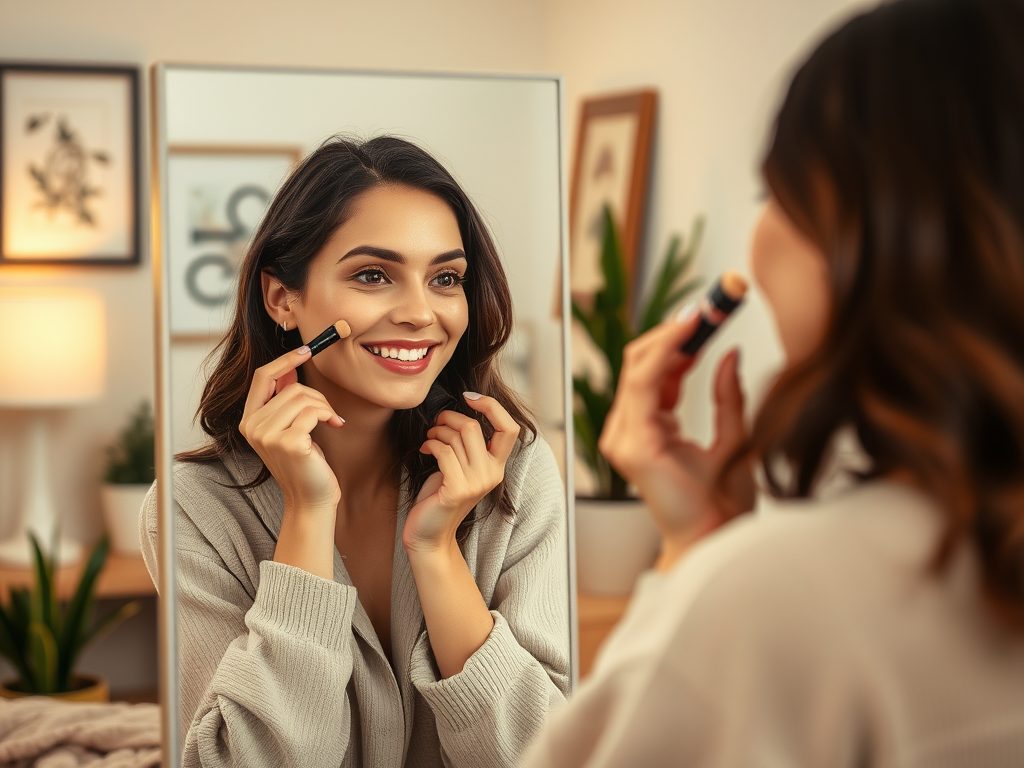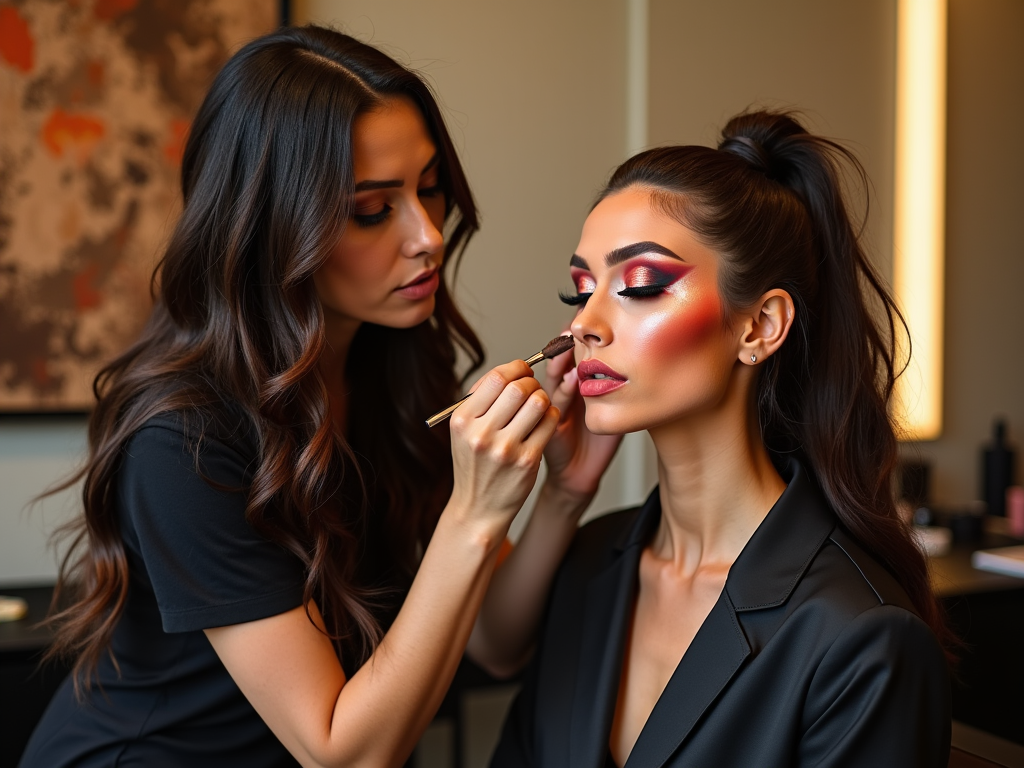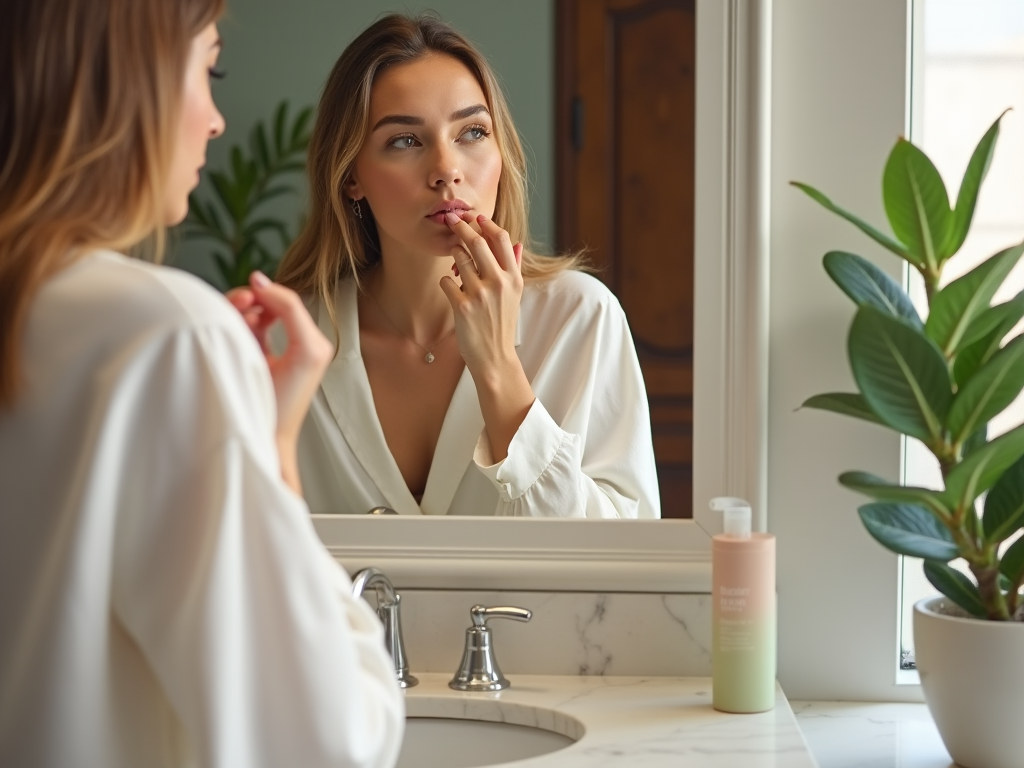Concealer is much more than a simple makeup product; it’s a transformative tool that can elevate your makeup game to new heights. Knowing exactly where to apply concealer can make or break your beauty routine. You may have heard the phrase “less is more,” but in the world of concealers, it’s about using just enough in the right places. Whether you’re looking to cover dark circles, blemishes, or redness, understanding your unique skin type will help you select the best method for application. This guides you not only in achieving a seamless look but also in enhancing your natural beauty. Dive into the world of concealers and discover tailored techniques that ensure your skin always looks its best.
Before we jump into the specifics, let’s explore what defines different skin types, as this understanding is crucial for selecting the right products and methods. From oily to dry skin, each type has its own unique challenges when it comes to concealer application. A common mistake is applying the same techniques across various skin types, which can lead to unfavorable results. If you want to achieve that flawless finish, identifying and understanding your specific skin type is essential. Are you ready to learn how to flawlessly apply concealer based on your skin’s needs? Let’s get started!
Understanding Concealer and Its Purpose

Concealer serves the primary purpose of masking imperfections, from dark circles under the eyes to any unsightly blemishes or redness. This versatile product comes in various formulas, including liquid, cream, and stick options, catering to the diverse needs of your skin. Given its specialized role, it’s important to consider factors like coverage, texture, and finish to achieve that flawless look. Choosing the right concealer is crucial for both aesthetics and skin health. Consequently, understanding how and where to apply it is critical for maximizing its potential. Remember, proper application techniques can turn even the simplest product into an effective beauty secret.
Identifying Your Skin Type

Determining your skin type is step one in mastering the art of concealer application. Each skin type presents its own unique challenges and benefits, dictating the products and techniques that will work best for you. Here’s a summary of the four main skin types you might encounter:
- Oily Skin: Prone to shine and breakouts, often needs oil-free products.
- Dry Skin: Requires hydration-focused products to avoid emphasizing dryness.
- Combination Skin: Features both oily and dry areas, often needing a dual approach.
- Sensitive Skin: Demands hypoallergenic and gentle products to avoid irritation.
Best Practices for Applying Concealer Based on Skin Type
Oily Skin
If you have oily skin, embracing specific techniques can make a world of difference. Look for oil-free, matte formulas that help control shine while providing the coverage you need. One effective approach is to use a small brush or even a damp makeup sponge when applying the product. This technique allows for more precision, ensuring that concealer is only placed on areas needing coverage without making the entire face look flat. Additionally, sometimes less is more; applying a small amount and layering if necessary can lead to a more natural finish. Setting your concealer with a translucent powder keeps it in place, combatting the risk of excess shine throughout the day.
Dry Skin
For individuals with dry skin, using concealer can be tricky since certain formulas may accentuate dryness. Aim for creamy, hydrating concealers that blend seamlessly into the skin. A crucial aspect when applying is to avoid heavy layers; instead, use your fingertips to gently dab the product into the areas of concern. This gentle method helps to create a natural finish while preventing the product from clinging to any dry patches. You might also find it useful to prepare your skin with a good moisturizer as a base layer before applying concealer. Remember, maintaining good hydration is essential for achieving a smooth, flawless look.
| Skin Type | Recommended Concealer Formula | Application Method |
|---|---|---|
| Oily Skin | Oil-free Matte | Small brush/damp sponge |
| Dry Skin | Creamy Hydrating | Fingertip dabbing |
| Combination Skin | Dual Formulation | Precise application |
| Sensitive Skin | Hypoallergenic | Soft brush/fingers |
Combination Skin
If you’re faced with combination skin, it calls for a balanced approach in choosing your concealer. Using a dual formulation can truly enhance your overall look. This means applying a creamy, hydrating product to the drier areas while opting for a matte formula on the oilier zones. Layering carefully can prevent product build-up and ensure a more uniform appearance. Precision is essential, particularly in areas that need specific coverage. Don’t forget to blend well, as this will eliminate any harsh lines and create a seamless look.
Sensitive Skin
Applying concealer on sensitive skin demands extra caution to avoid irritation or breakouts. Focus on hypoallergenic formulas that have been specifically designed to minimize reactions. Application should be gentle; using clean fingers or a very soft brush allows you to apply the concealer without pulling at your skin. Take time to build coverage gradually, rather than applying a thick layer at once. Additionally, prepped skin is key—always ensure you have a gentle moisturizer that suits your skin type before application to create an optimal canvas. Finally, always conduct a patch test with new products to avoid any unwelcome reactions.
General Application Tips for All Skin Types
While each skin type has specific needs, there are general tips that can enhance concealer application for everyone. First and foremost, always start with a clean, well-moisturized face. This ensures that the concealer adheres properly and blends seamlessly. Using a good primer underneath your makeup can significantly improve the longevity of your concealer, keeping it fresh throughout the day. When blending, use a gentle patting motion with your chosen tool, whether it’s a brush, sponge, or your fingers. Make sure to set your concealer with a light dusting of translucent powder depending on your skin type to maintain the look and longevity.
Conclusion
Mastering concealer application tailored to your skin type is essential for achieving that flawless finish. By understanding your unique skin needs and following the recommended techniques, you can enhance your natural beauty effectively. Experimentation is key; don’t be afraid to try various formulations and methods to discover what works best for you. Remember, the goal is to ensure that your imperfections are masked elegantly while allowing your skin to look lively and radiant. With these insights and tips, you’re well on your way to becoming a concealer pro!
Frequently Asked Questions
- What type of concealer should I use for acne-prone skin?
Look for oil-free, non-comedogenic formulas that won’t clog your pores. - How do I choose the right concealer shade?
For under-eye circles, select a shade lighter than your foundation; for blemishes, match it to your skin tone. - Can I use concealer without foundation?
Yes, applying concealer alone can be effective for minor imperfections and achieving a natural look. - How do I make my concealer last longer?
Always use a primer underneath and set with a translucent powder after application. - Is it necessary to use a different concealer for different purposes (e.g., under-eye vs. blemish)?
Yes, using targeted formulas can yield better results for each specific area of concern.


